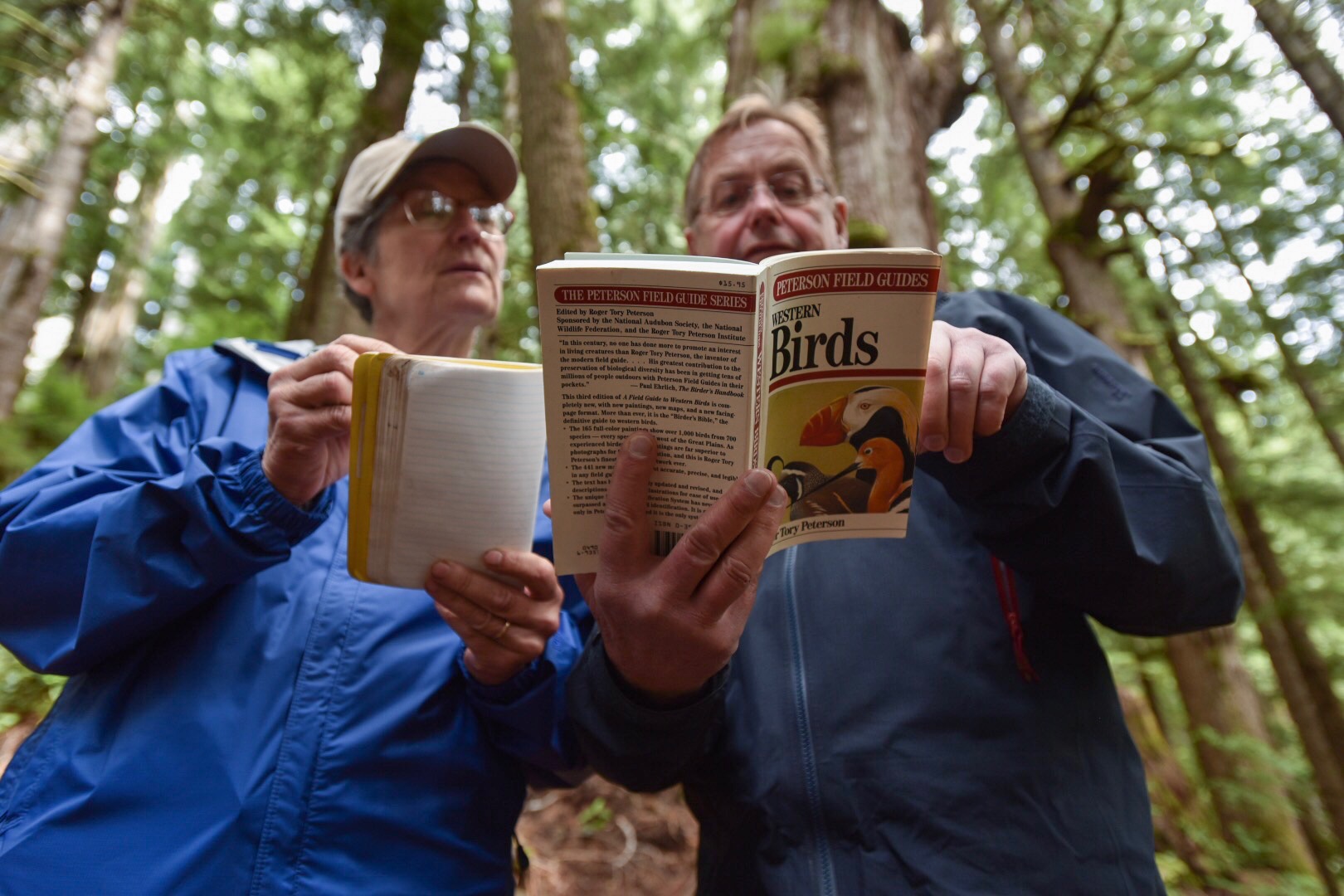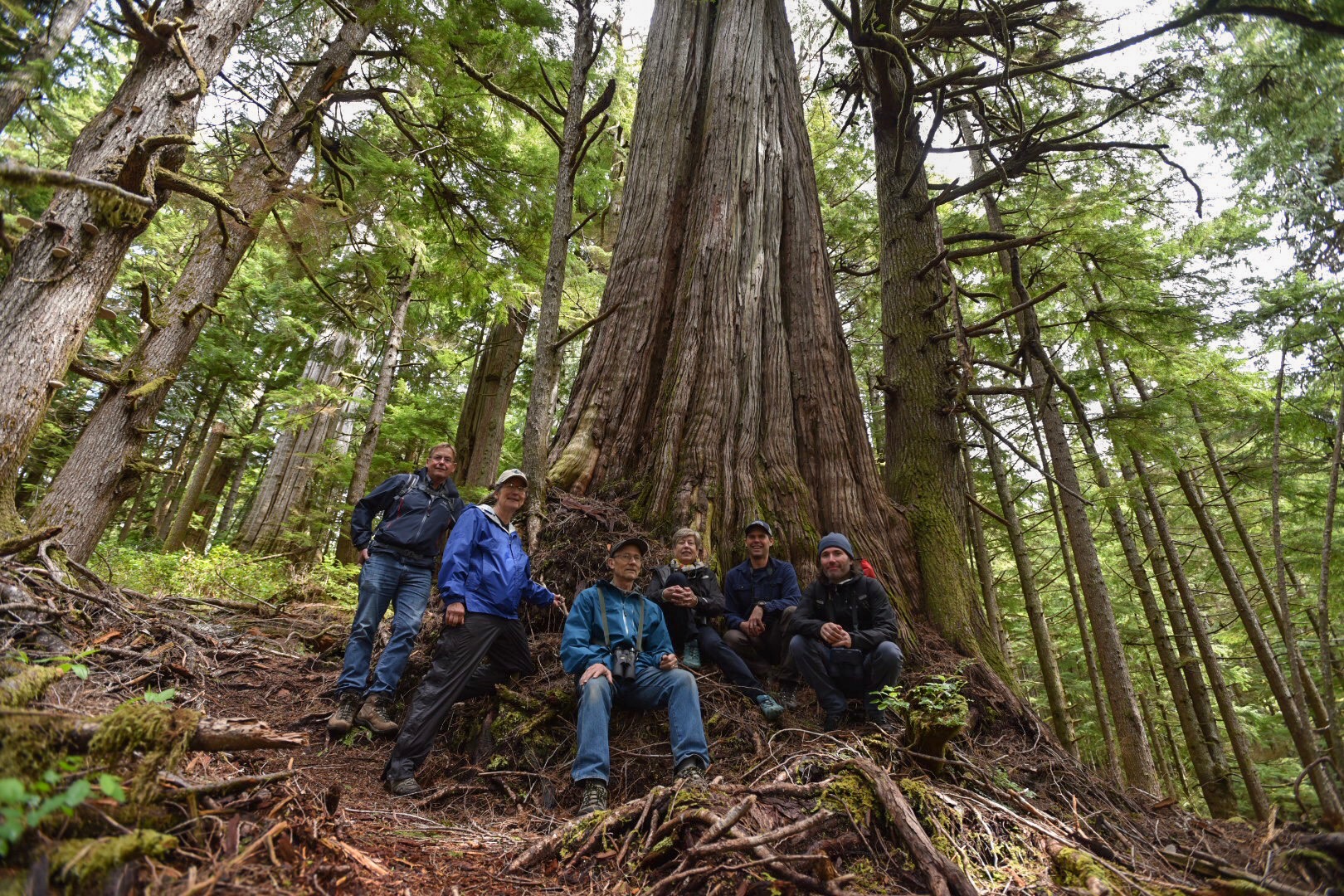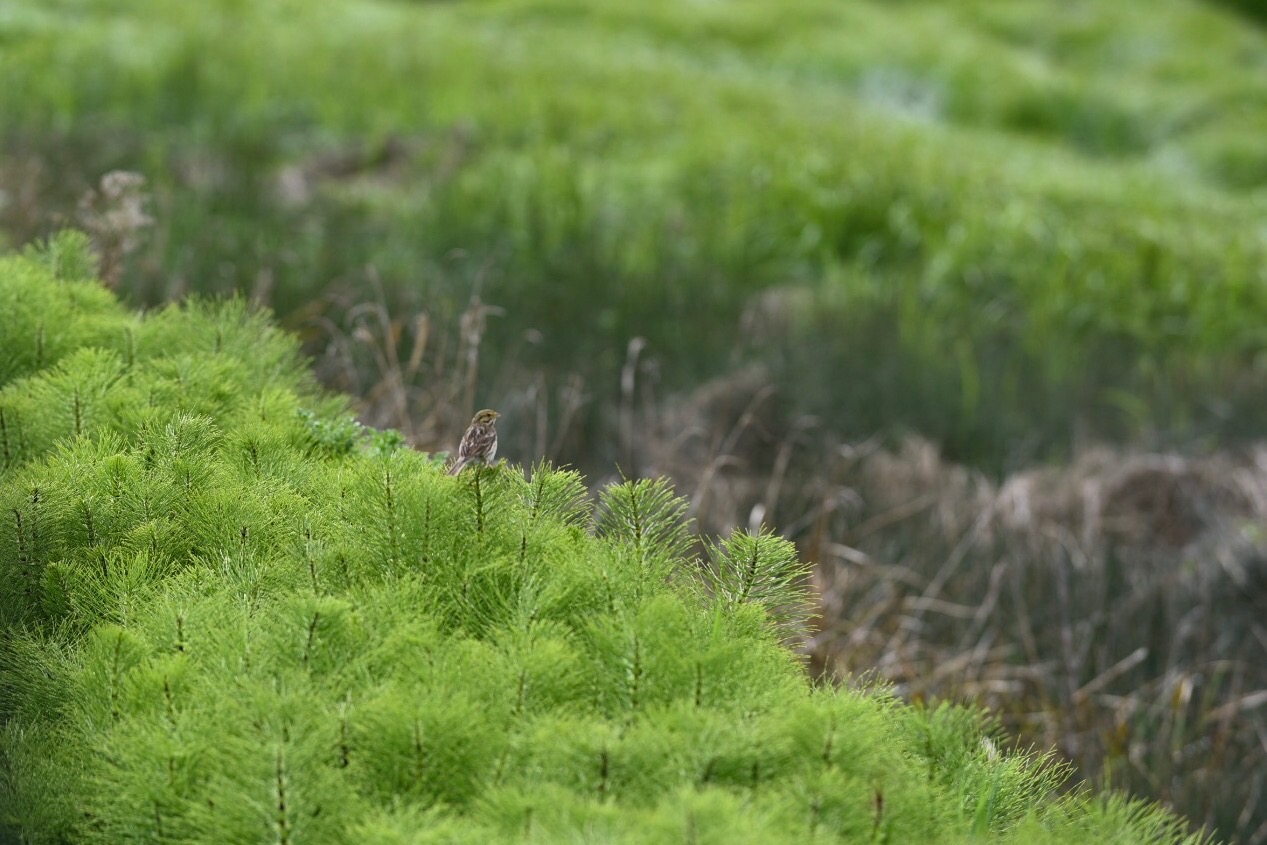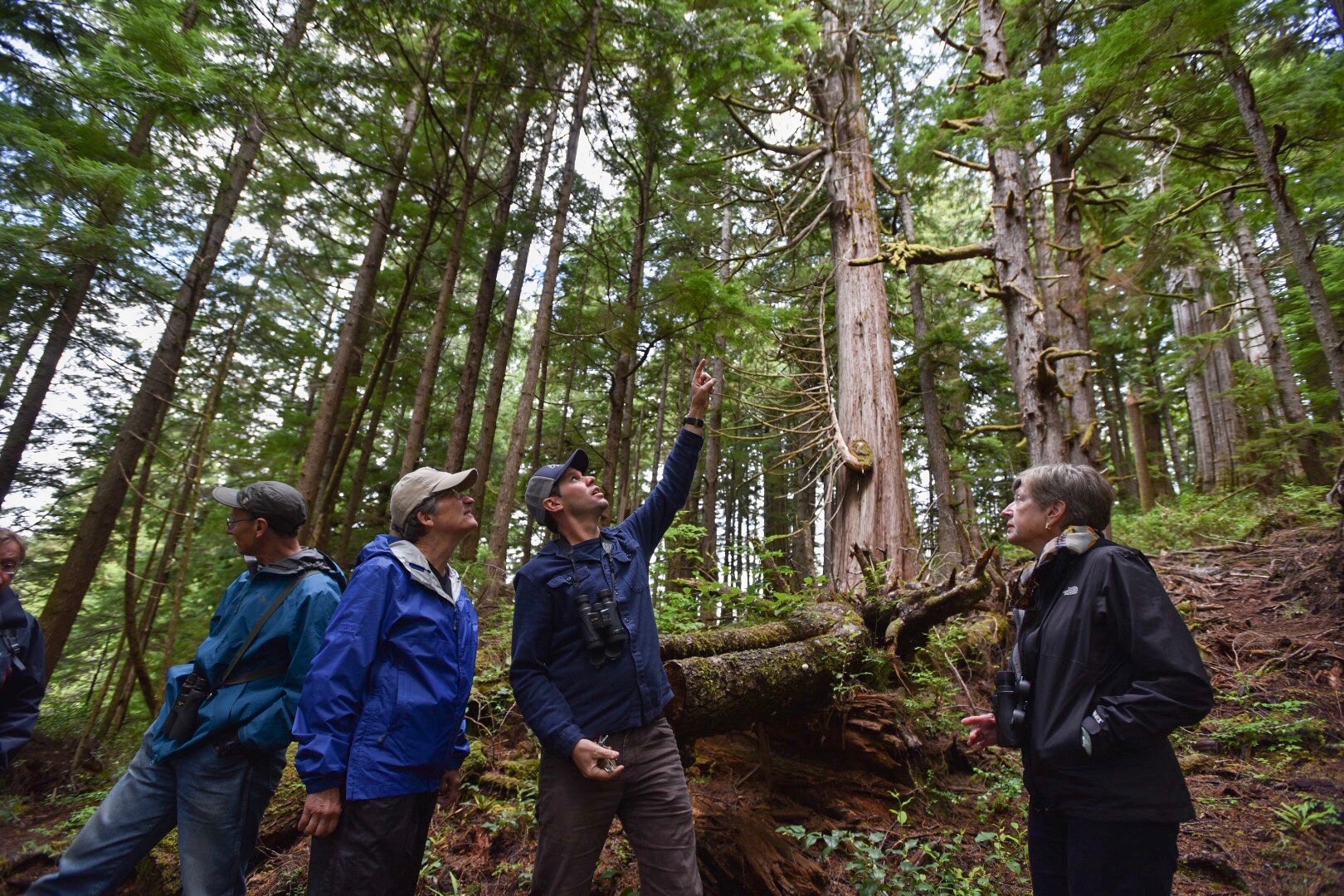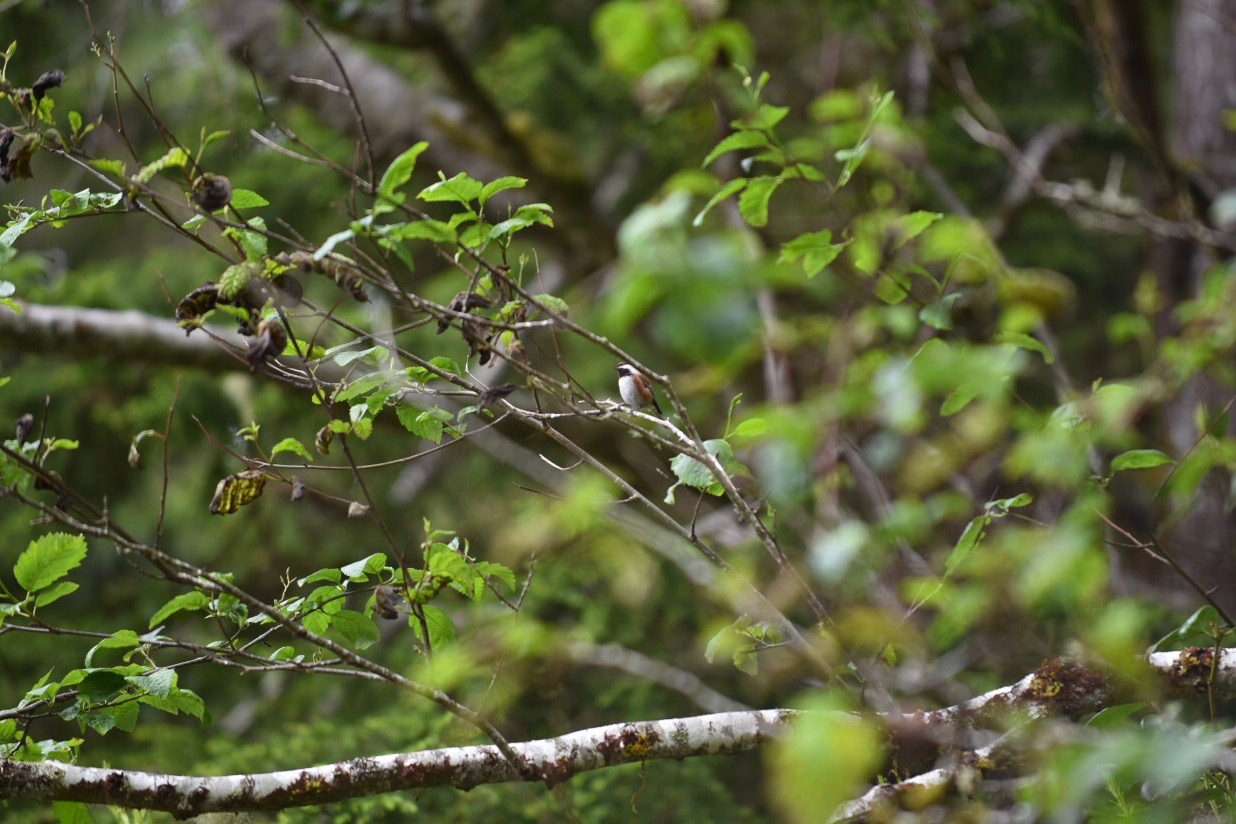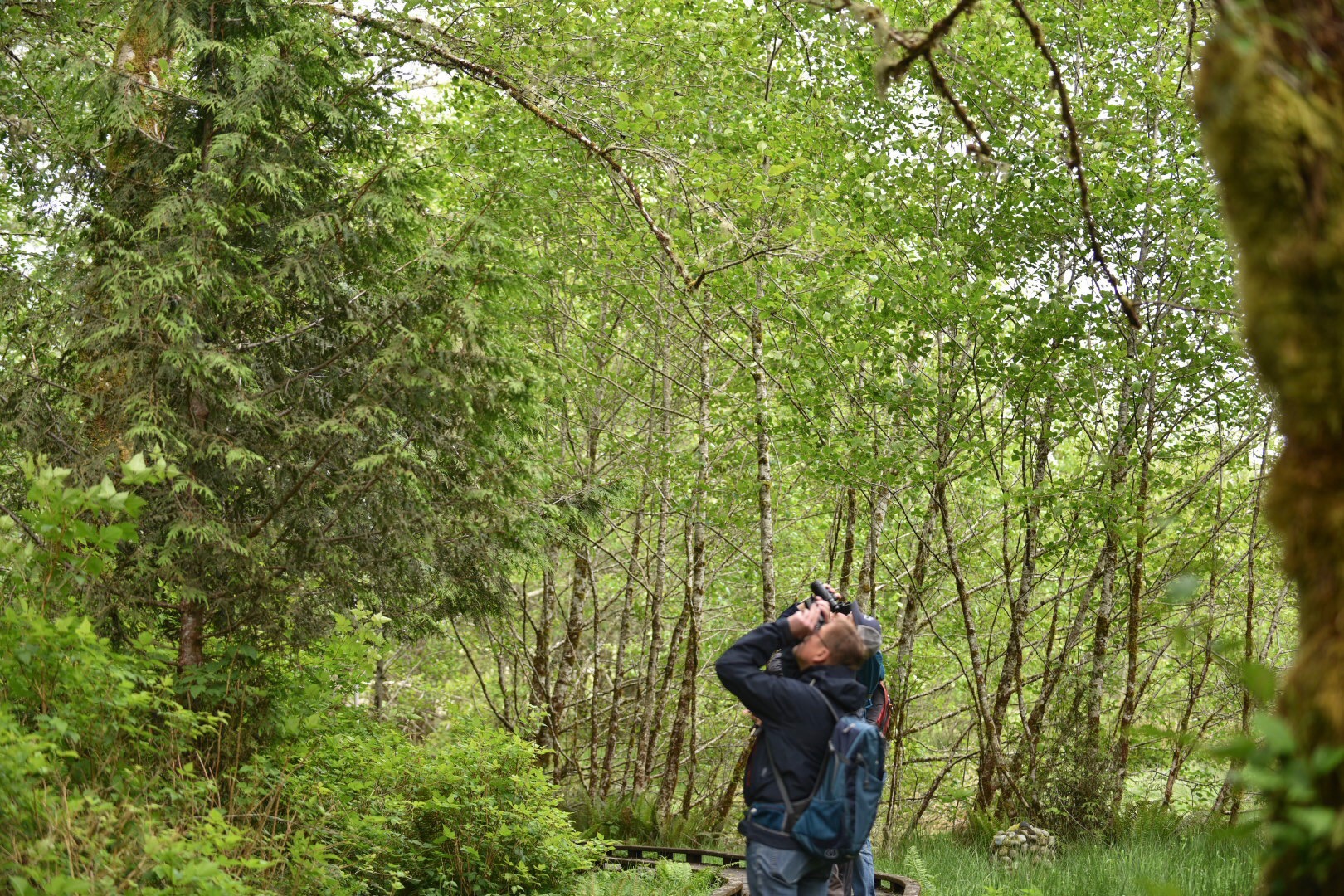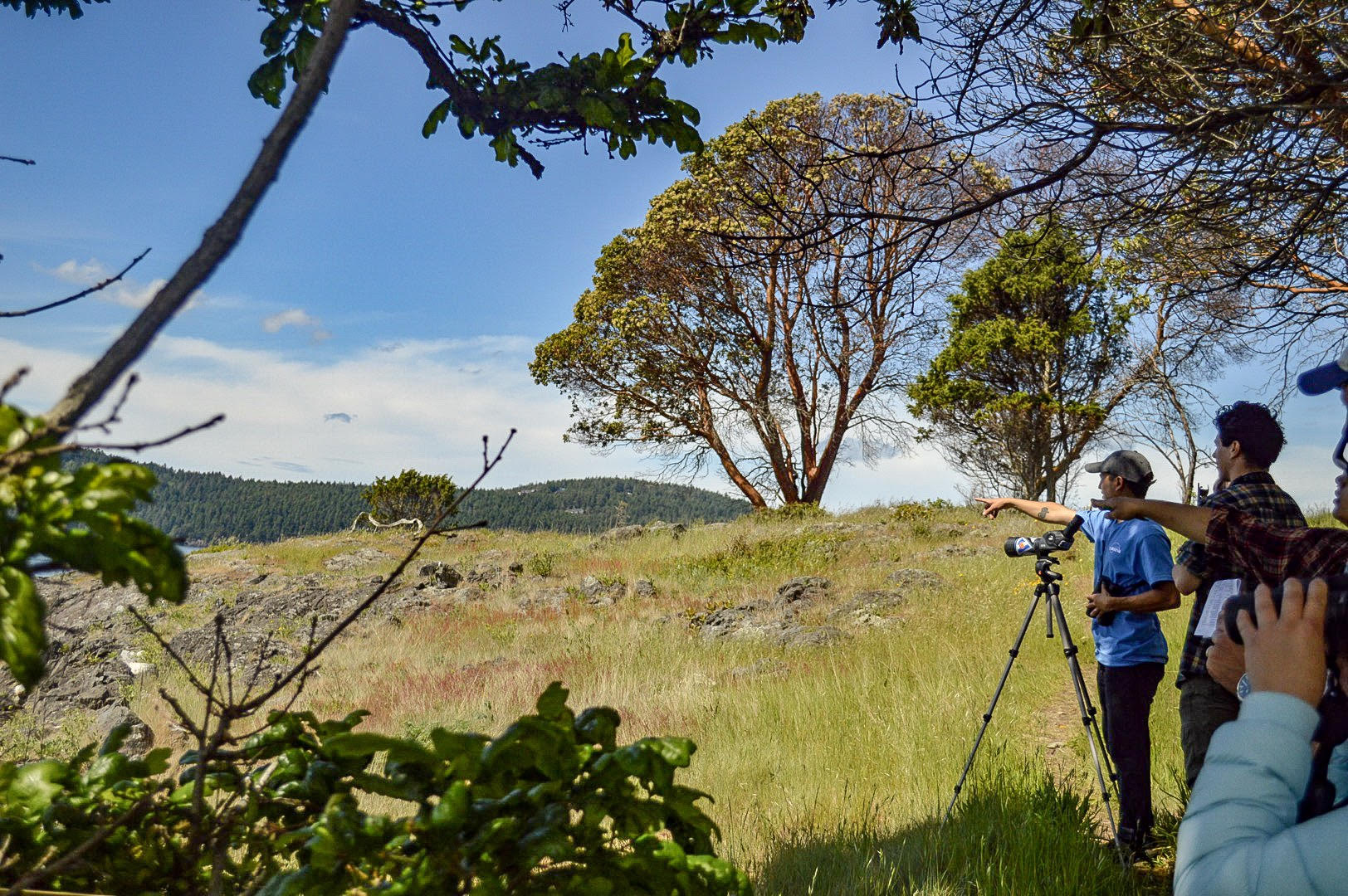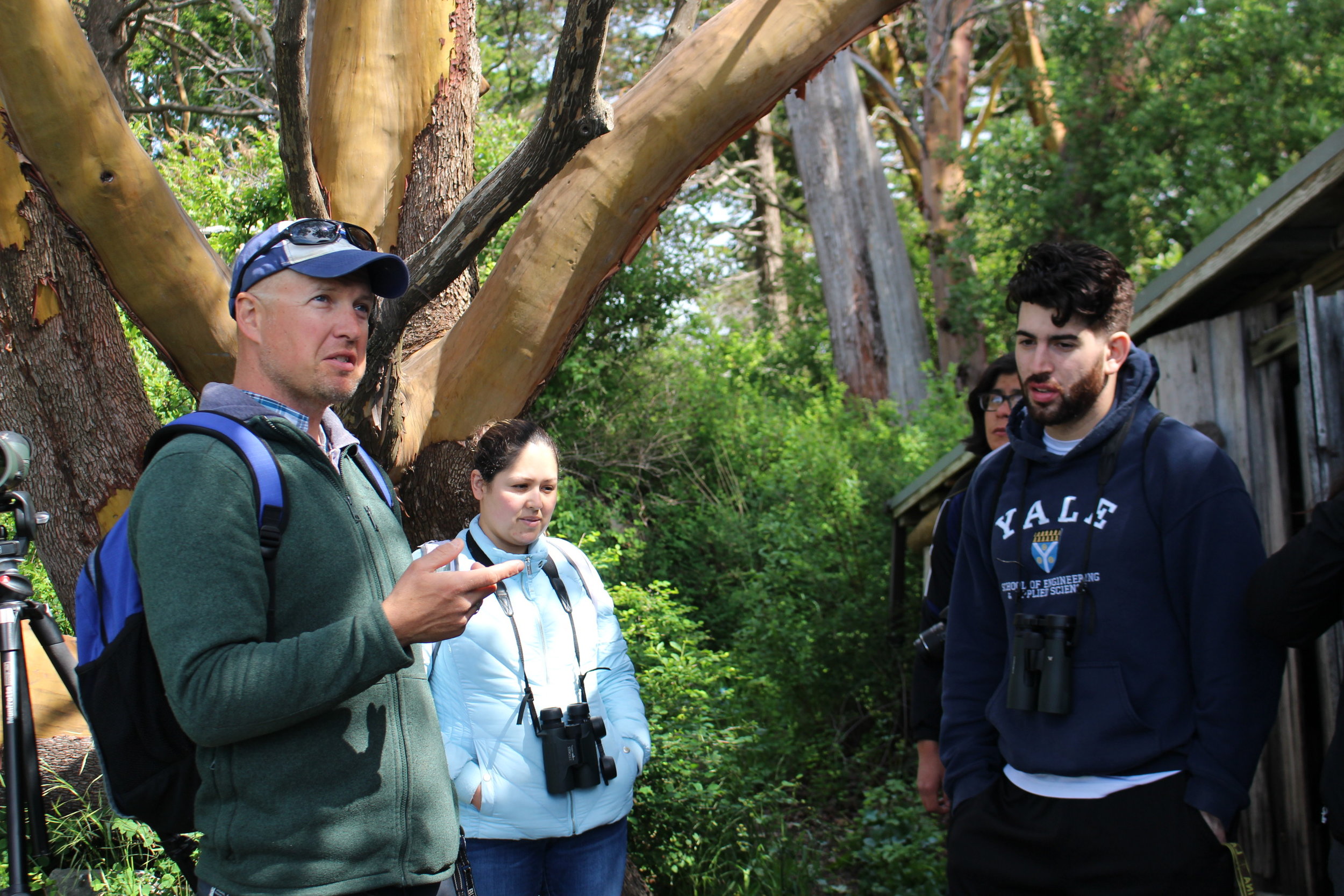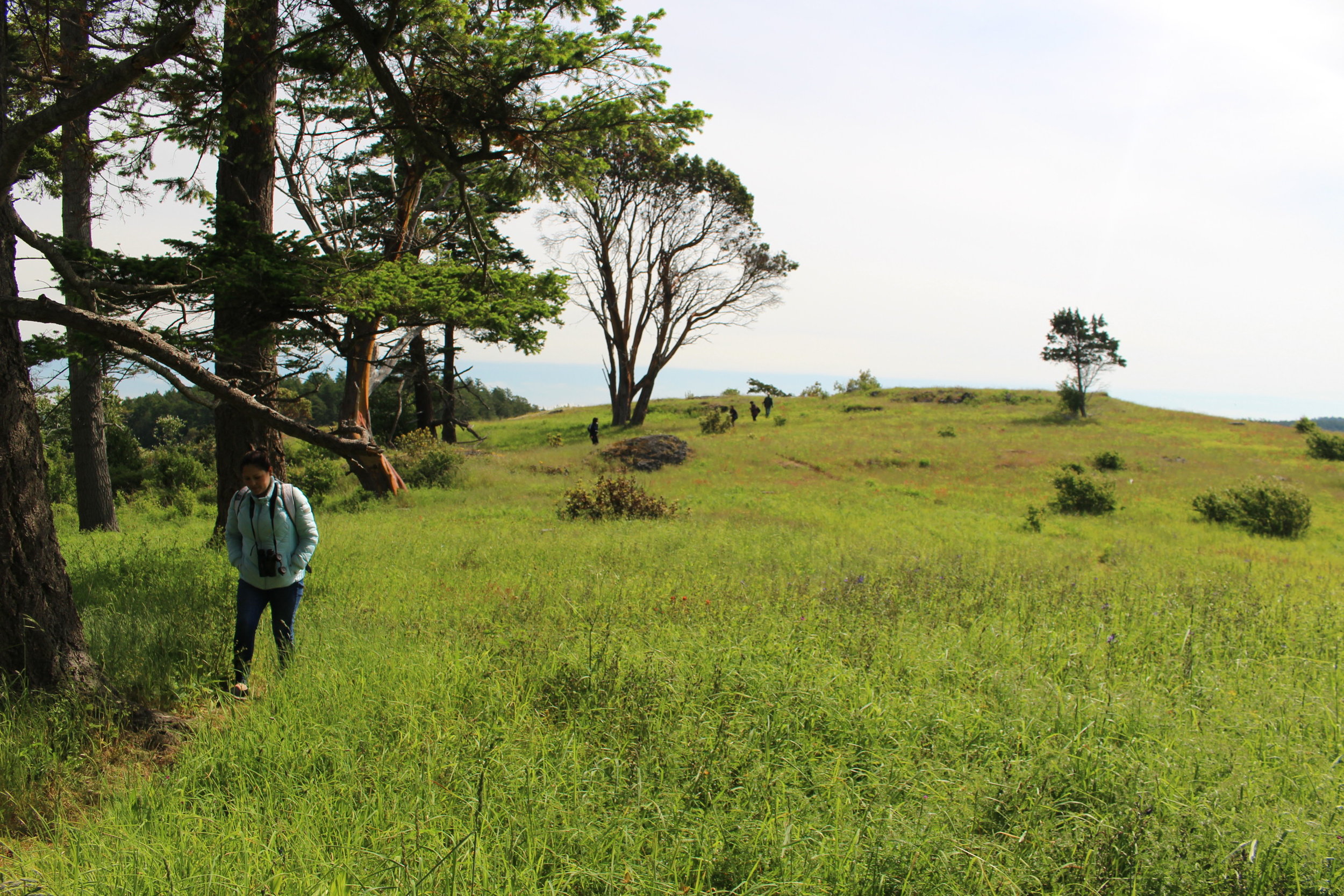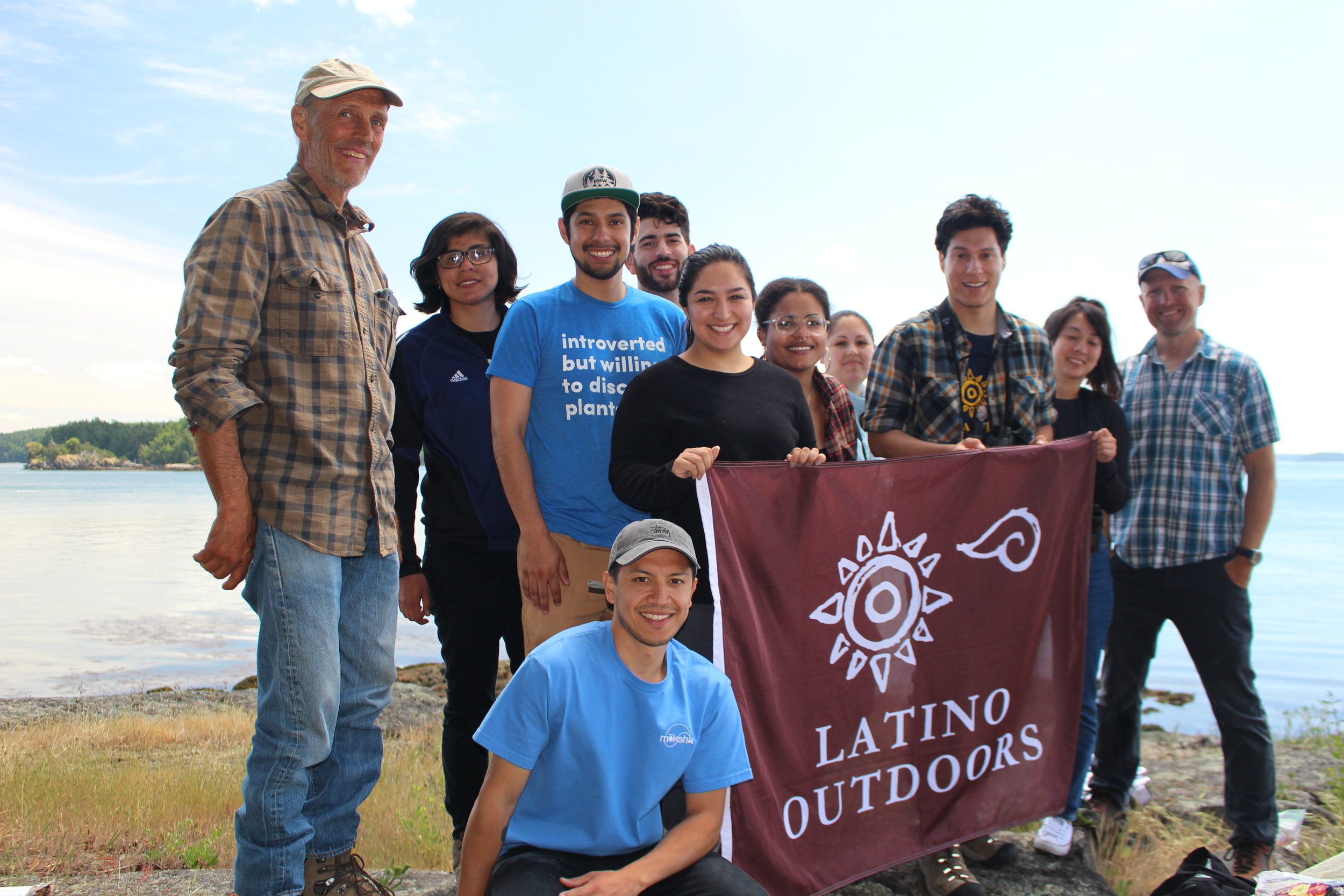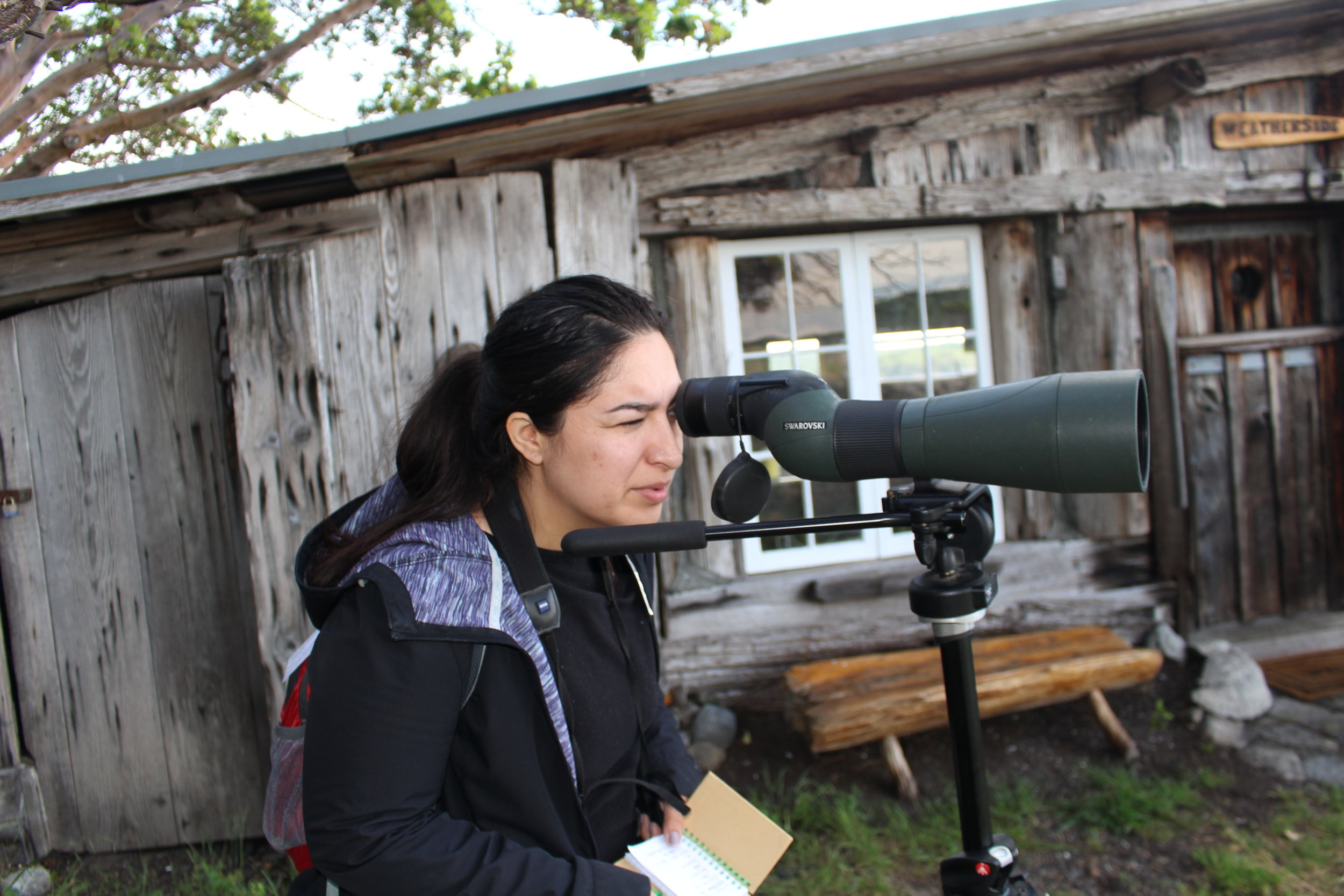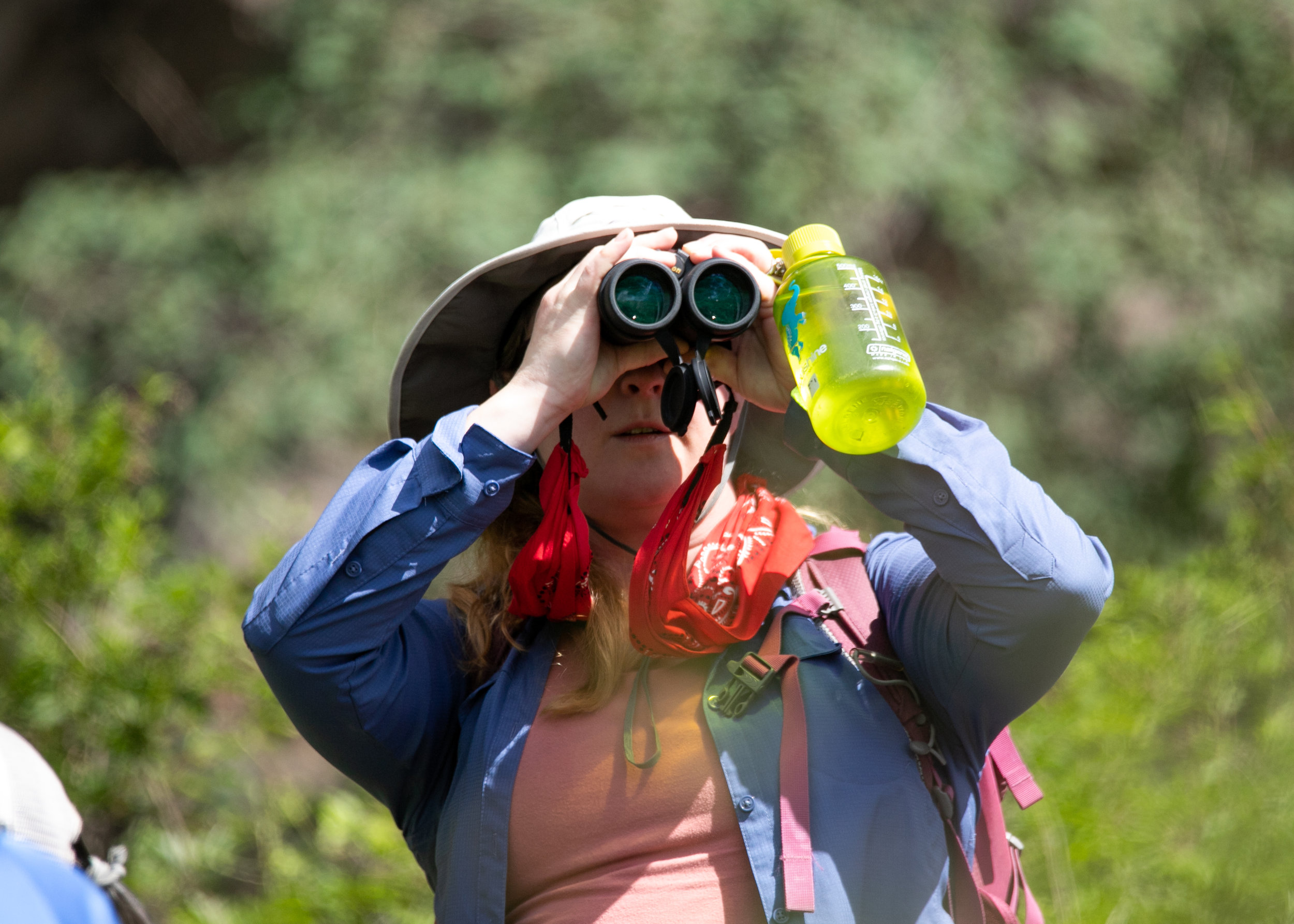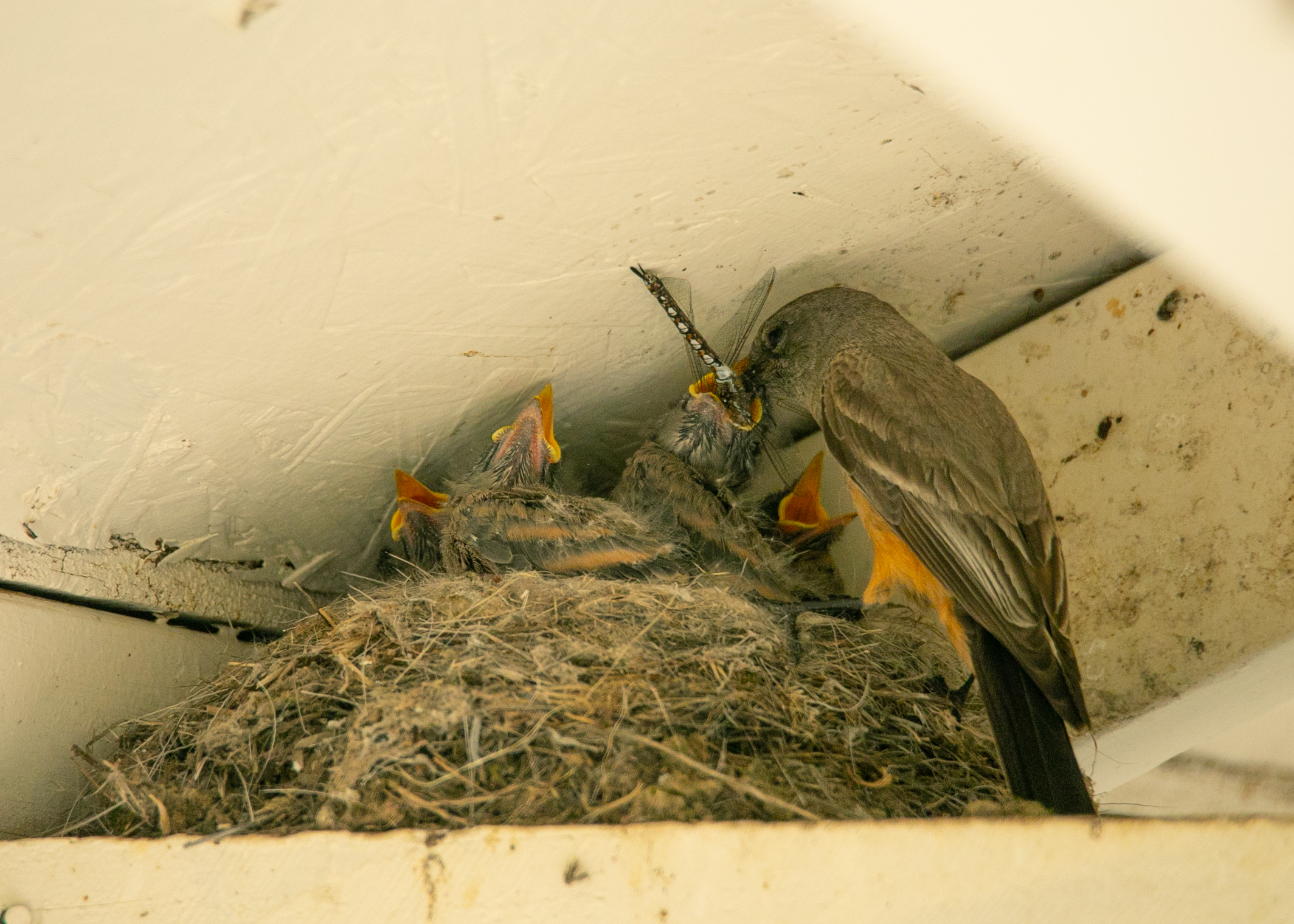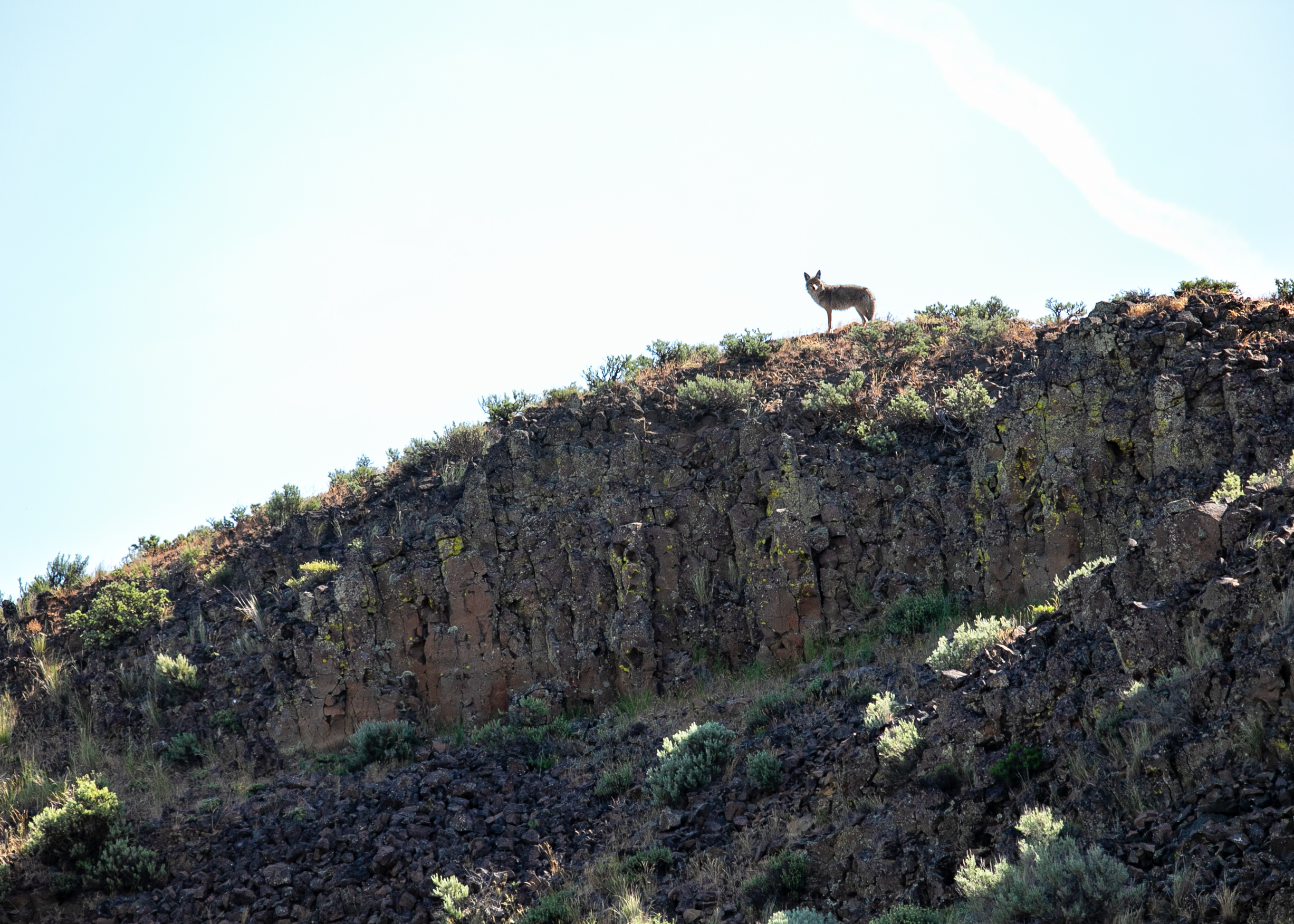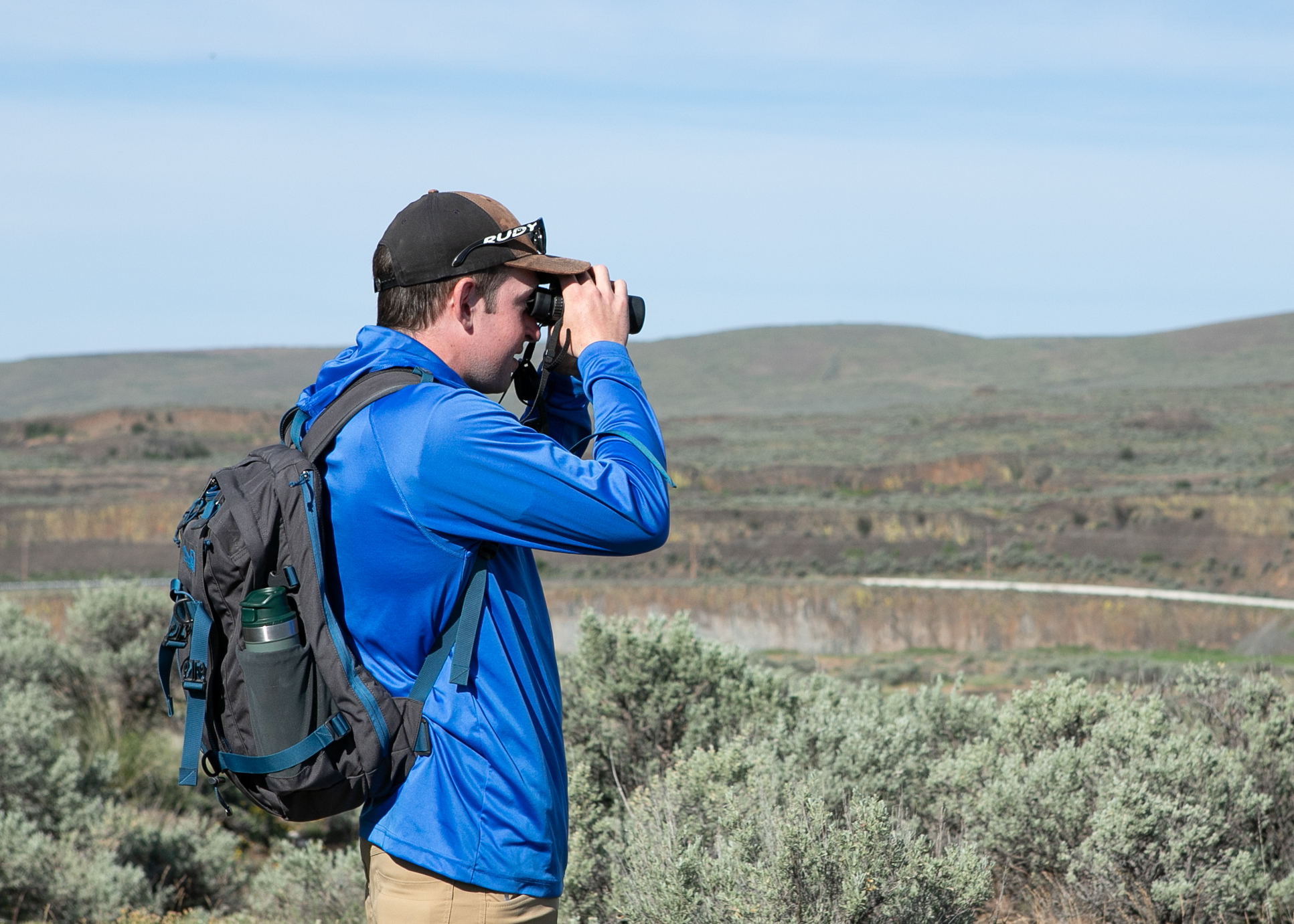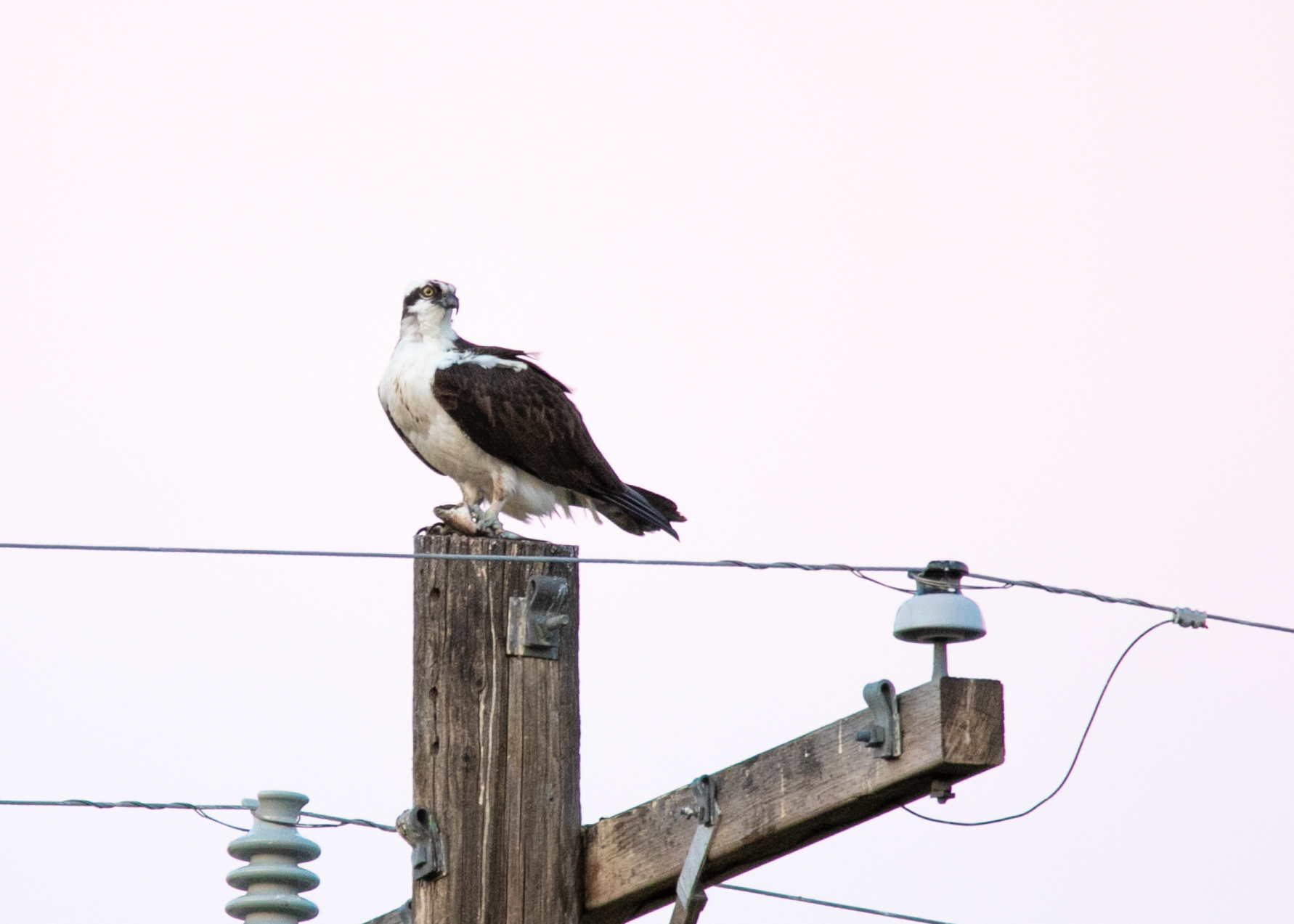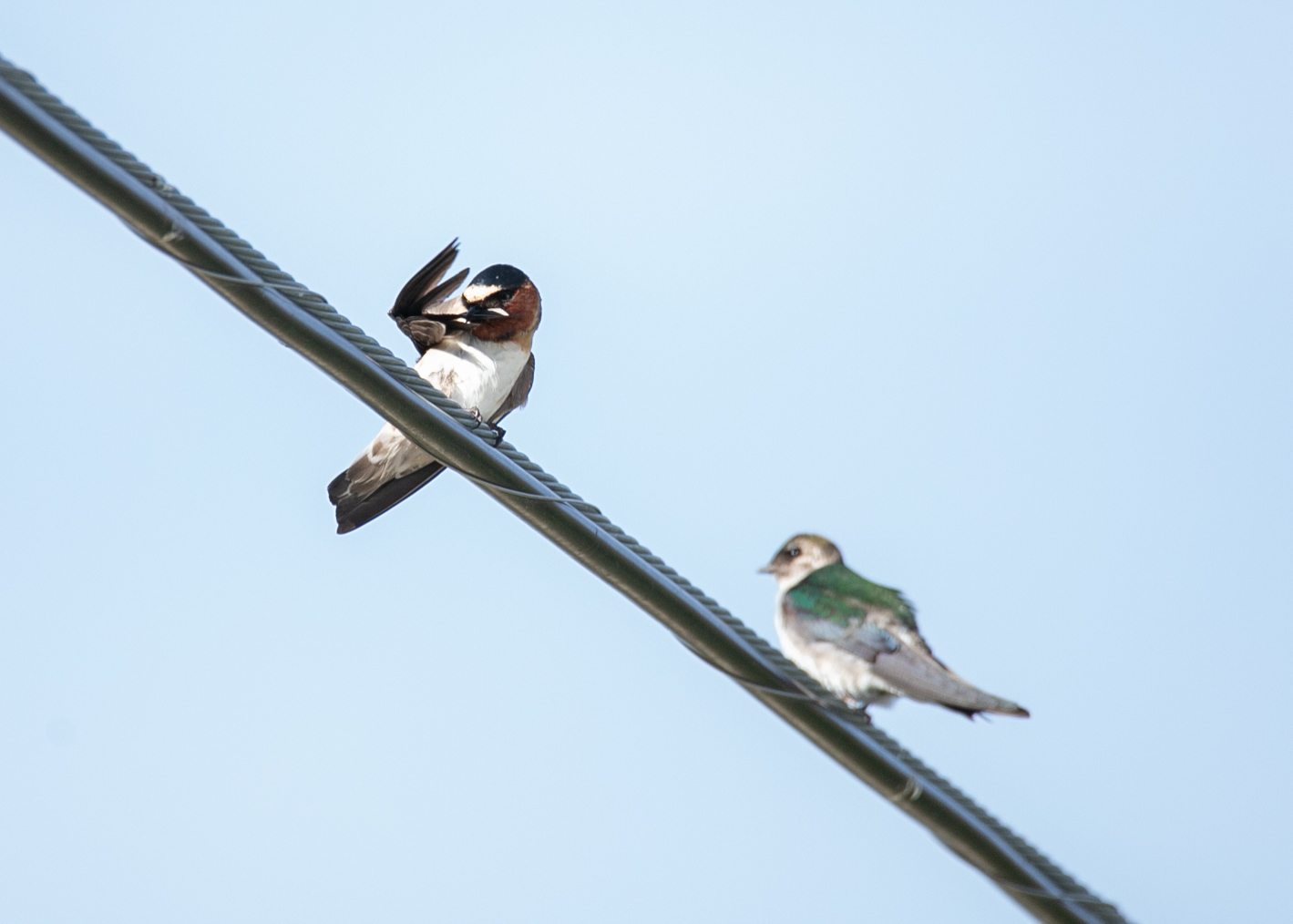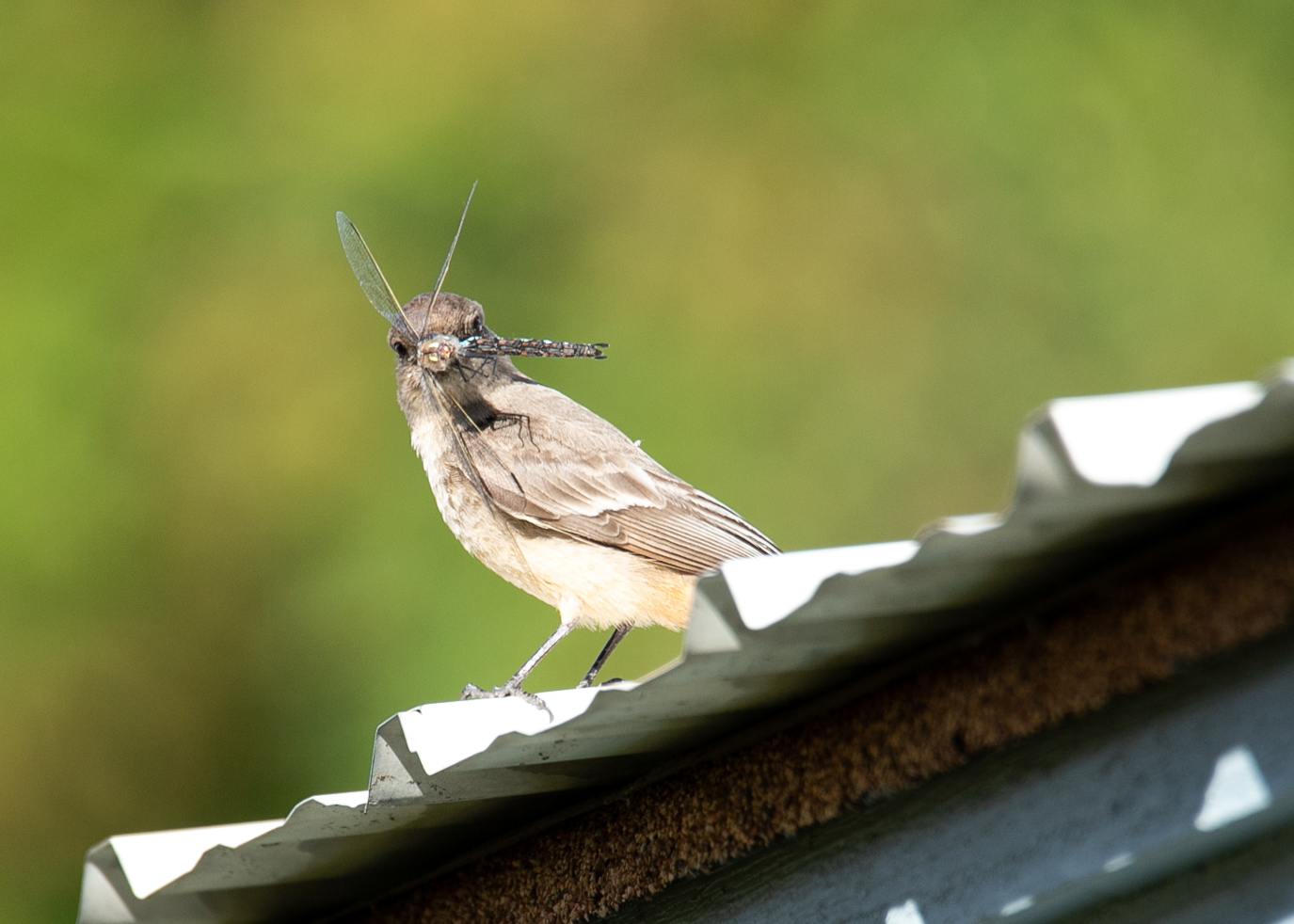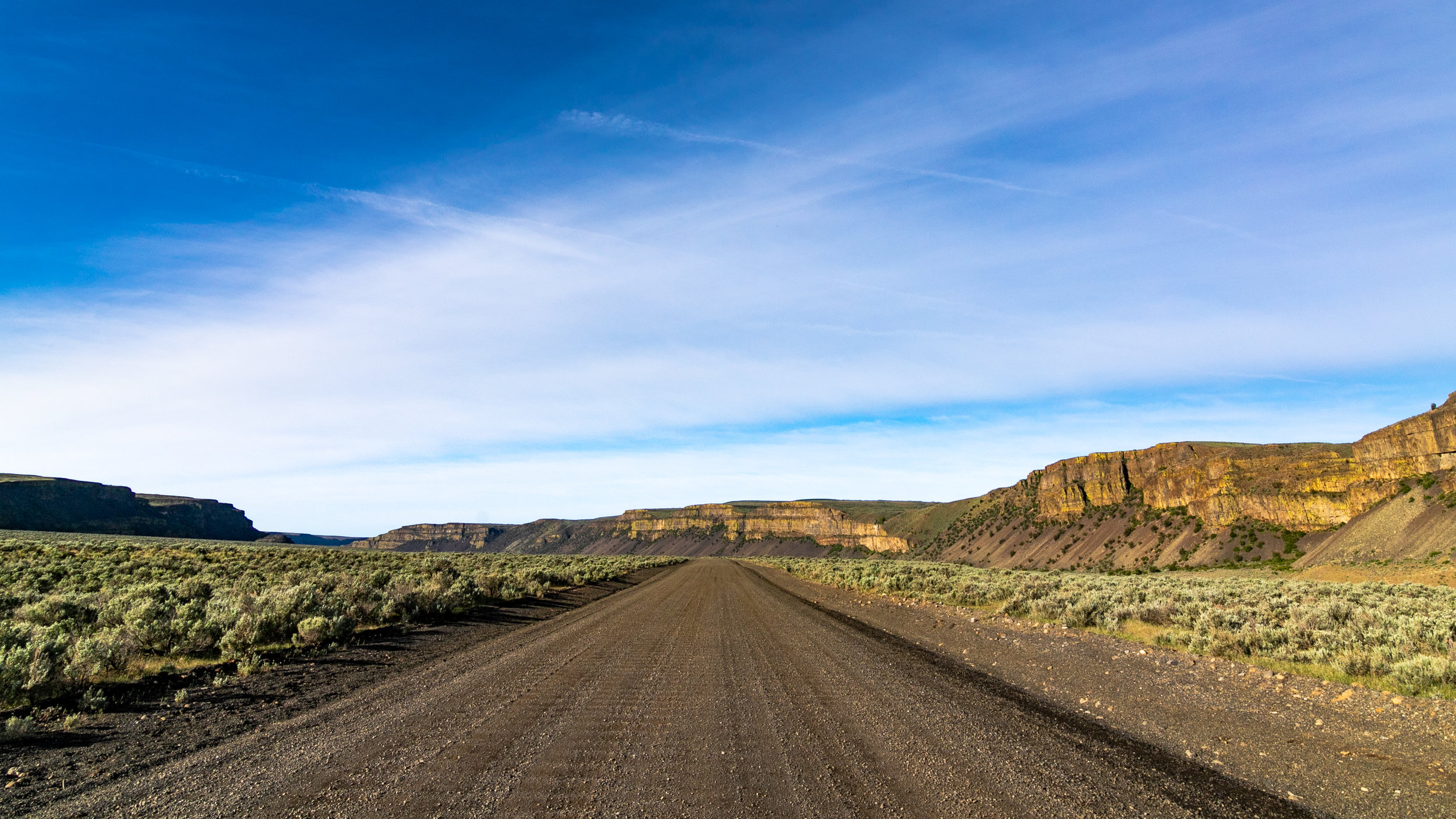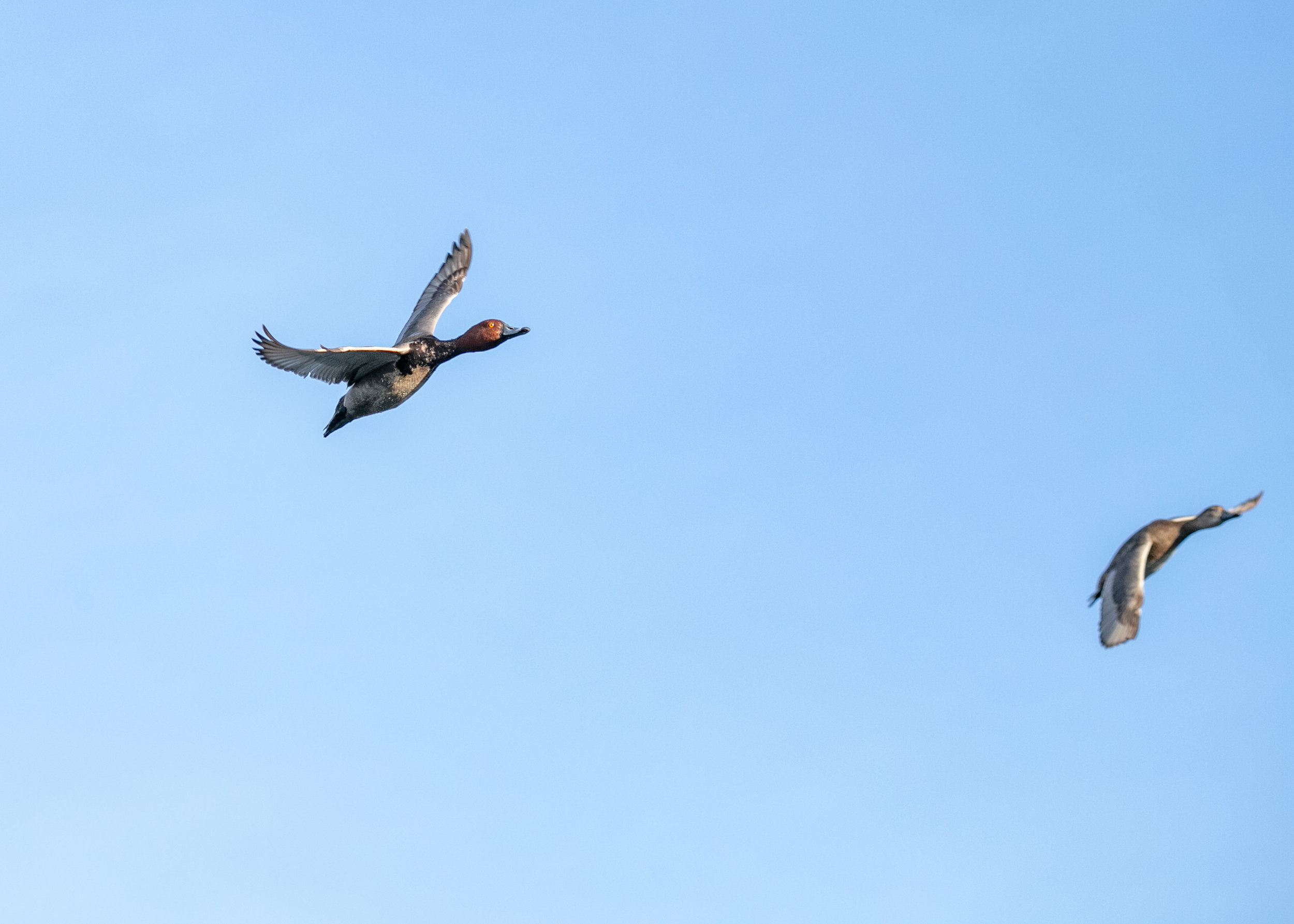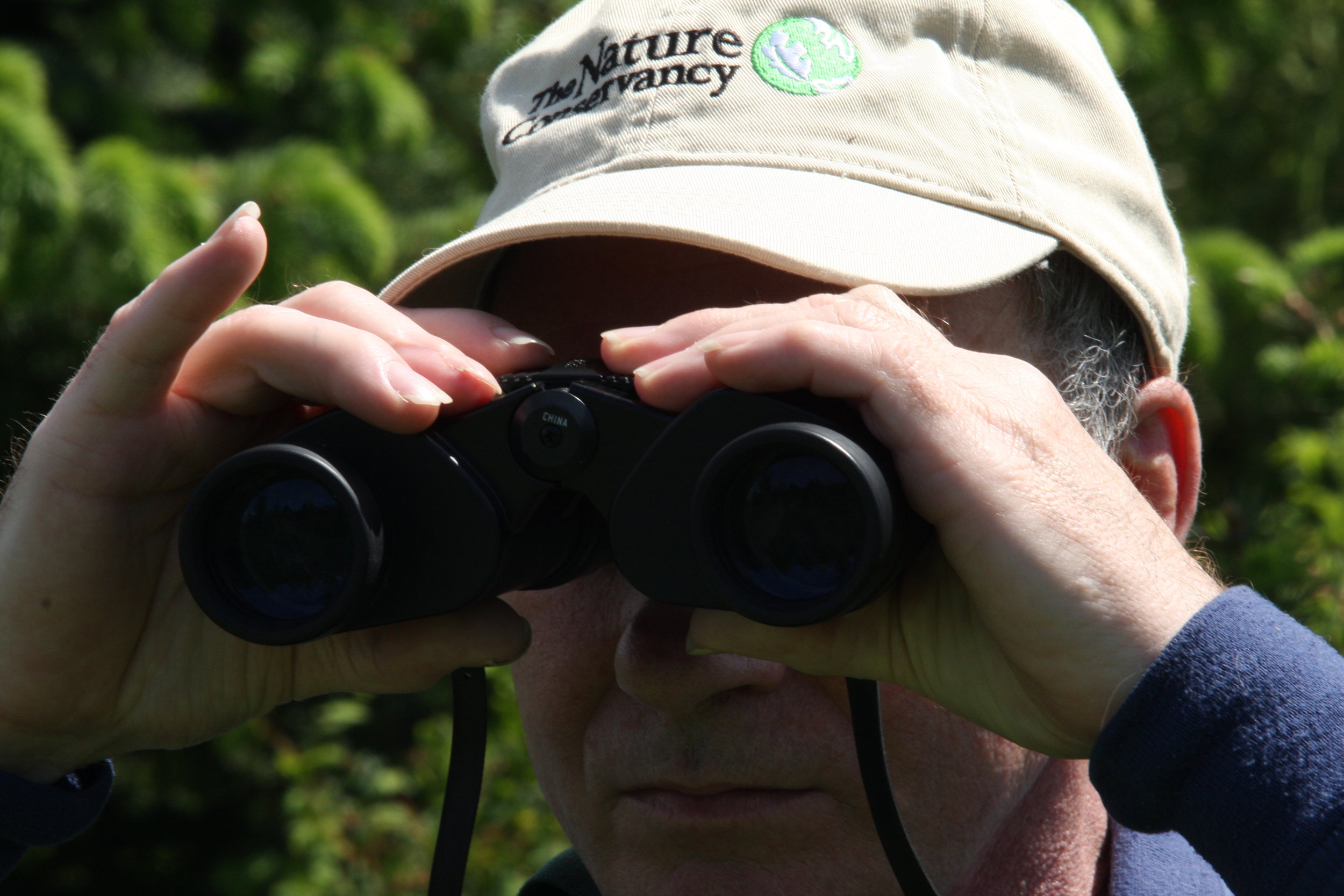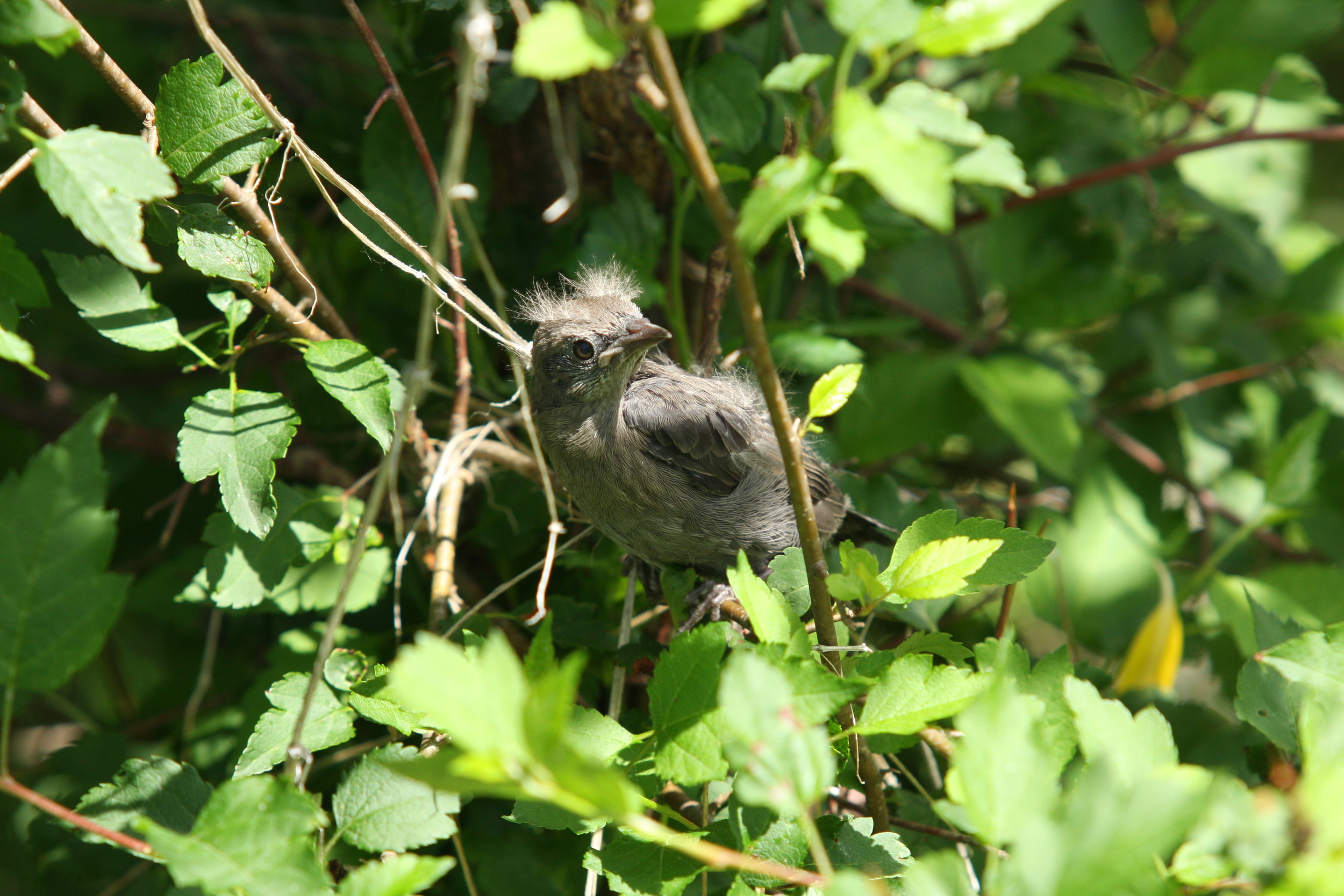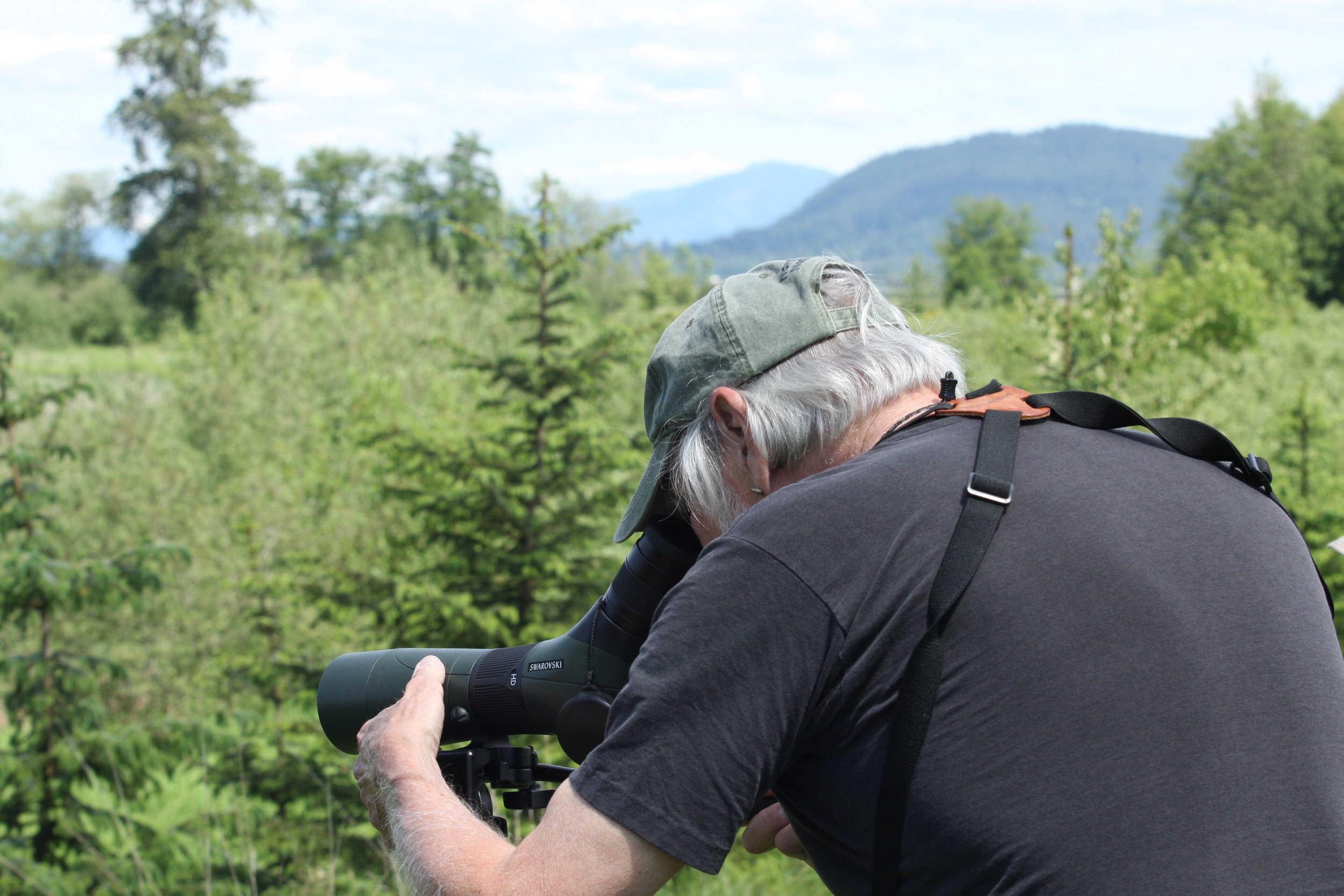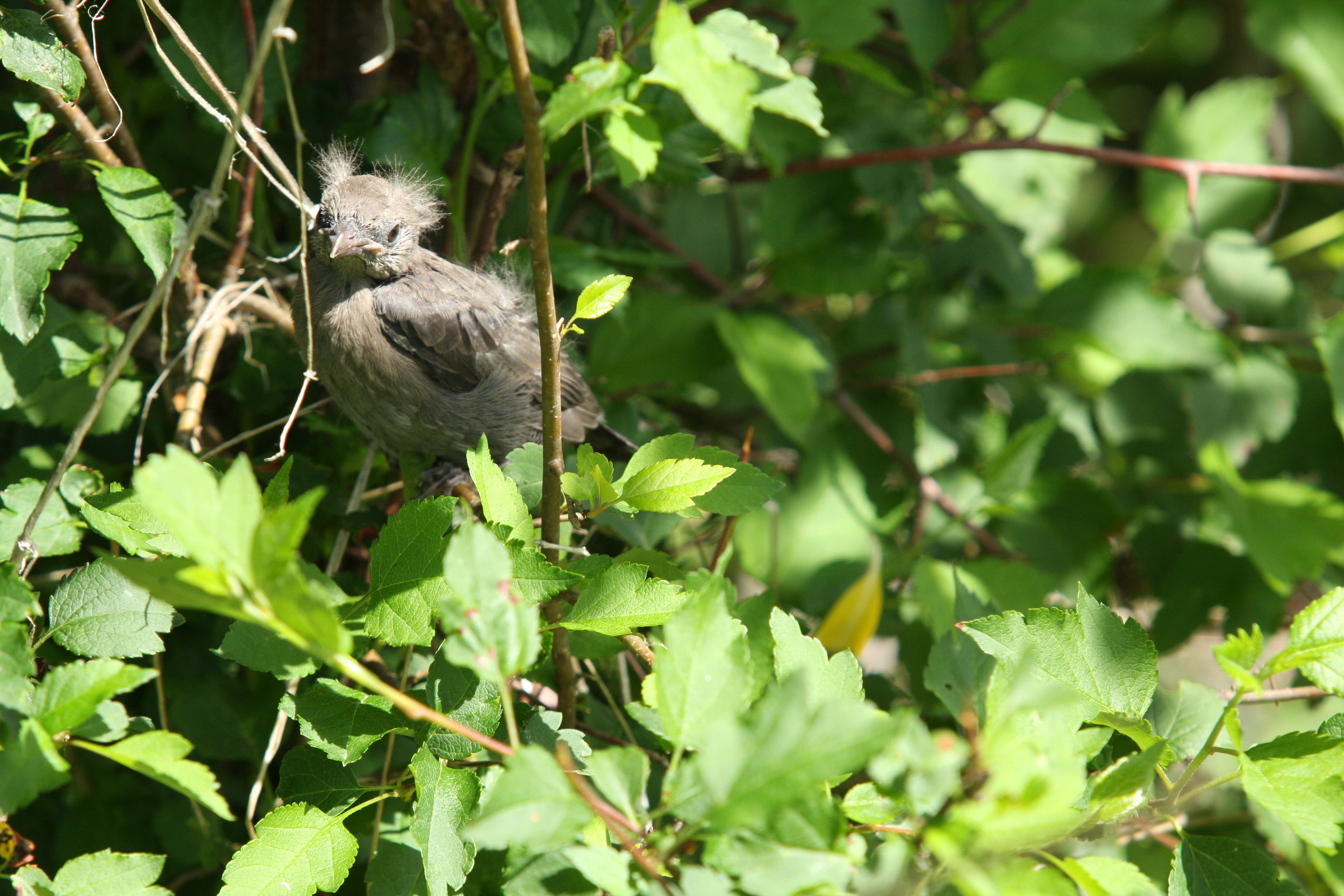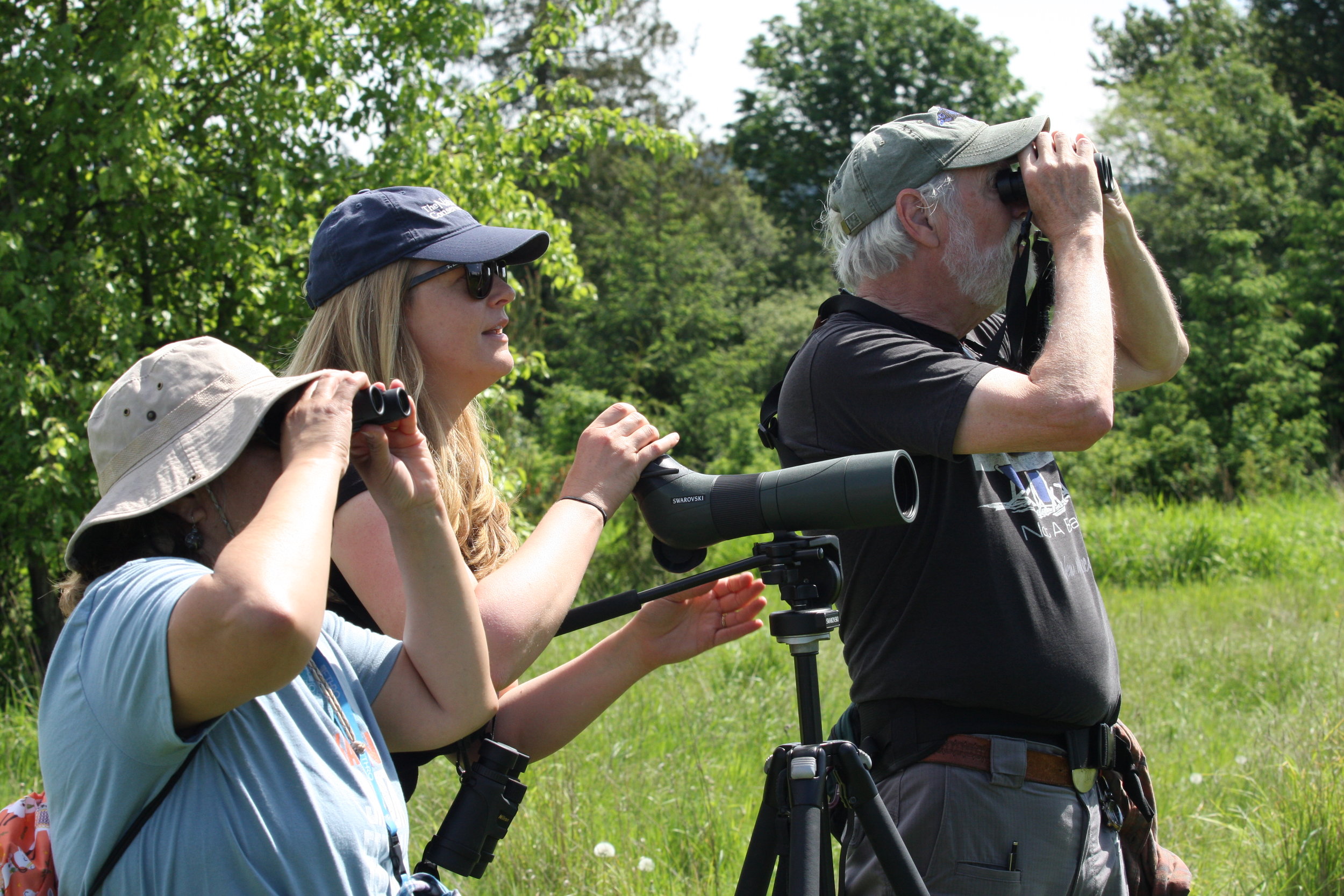Our mission last Saturday: To count as many species of birds as possible in one day on lands and waters protected by The Nature Conservancy. It was our first ever Nature Conservancy Bird Challenge hosted on our Washington preserves. The count is a learning opportunity for birders of all abilities, and helps serve as a “barometer” for the health of bird populations on our preserves.
From the Washington coast to Skagit Valley to Eastern Washington’s shrub steppe, Nature Conservancy land managers and volunteers donned binoculars, brought dog-eared field guides and traveled onto eight of our preserves. Read their highlights and see how many birds were counted in their blurbs below!
Ellsworth Creek
Photos by Hannah Letinich
Three was no rain in the rainforest for our 2019 Bird Challenge at 8,000-acre Ellsworth Creek Preserve located in Southwest Washington. Our group of 7 birders counted 27 species of birds in the Ellsworth Creek estuary and at different forest age classes and forest restoration treatments that we stopped at along the way through the Experimental Watershed.
Highlights of the bird challenge at Ellsworth Creek were two different warblers, Wilsons’s and the Orange-crowned warbler and a hike through the old growth forest where we heard the thunderous drumming of a Pileated woodpecker on 1,000-year-old Western red cedar tree echoing like a jackhammer throughout the forest.
— Kyle Smith
Yellow Island
Photos by Michelle Ortiz and Alfonso Orozco
A group of 10 traveled from Seattle to Yellow Island to participate in the 2019 Bird Challenge. You could see the excitement in everyone’s faces as the boat pulled up to the small 11-acre island. For many in the group, it was their first time birding; for some it was their first time on a boat.
Matt Axling, the current Yellow Island caretaker, and Phil Green, the retired Yellow Island caretaker of 20 years, greeted us with a smile as we unloaded. After getting a quick tour of the caretaker’s house, which is made completely of driftwood, we started our bird survey. Highlights include seeing three pairs of Harlequin ducks, learning how to identify white-crowned sparrows by song (“see me, pretty, pretty, me-e”), and watching first-time birders identify birds on their own. At the end of the day we counted a total of 17 different species.
— Alfonso Orozco
Moses Coulee
Photos by Amy Hallman
Corrine and I were privileged to host the Moses Coulee bird challenge. The shrub steppe in Washington state is a beautifully unique ecosystem that hosts a wide variety of birds. On our outing, we saw 40 bird species and highlights were a-plenty!
We started our day by enjoying the perfect weather by Whisper Lake, found a great horned owl — and even saw coyotes! Our next stop was Dutch Henry Falls, which provides an oasis in the arid landscape that brings in many birds to its cool water. We were even treated to a pair of golden eagles as they glided above the sage brush. We had a truly fantastic day shared with fantastic people!
— Marissa Young
Fisher Slough
Photos by Heather Van Steenburgh
Our group of around 11 met up at Fisher Slough with binoculars in our hands and the desire to identify every bird we could see or hear. Fisher Slough is a great place for birding since there is a diversity of habitat types: freshwater marsh, upland with shrubs and small trees, riparian areas and a tiny bit of forest edge
We were fortunate to have our long-time bird monitoring volunteers, Jeff Osmundson and Colleen Shannon with us to help pick out some of the more difficult birds. Our strategy for birding the whole preserve was to divide and conquer.
While Jeff and Colleen’s group were able to nab a few marsh-dwelling species, my group was able to identify quite a few passerines with the help of local birder, Kurt Ranta. Have you ever met a birder who was able to identify every bird in the area by call alone? It’s truly incredible to witness — like they have a superpower. I was content to use the mnemonics I had memorized for local bird calls: American goldfinch flight call, “po-tat-o chip” or common yellowthroat, “witchidy witchidy witchidy witch.”
At the end of two hours, we had totaled 31 species. Our group experience level ranged from novice to expert, but everyone was able to enjoy the beautiful day and bountiful avian life at this incredible restored wetland.
— Amber Parmenter
The killdeer nest on the dike. Photo by Amber Parmenter/TNC
Port Susan Bay
We began our count at Port Susan Bay later in the day. With a low tide and a hot sun overhead, many birds were absent from the site. Our count happened slowly as we walked the dike as a group. A sparrow here, a shorebird there and eventually we tied with Fisher Slough’s team for total birds counted!
A highlight was the nesting purple martins near the site entrance. These birds readily move into nest boxes and their deep purple plumage and aerial acrobatics make them a very charismatic species. We also observed a killdeer nesting on the dike, and made sure to walk softly and deliberately to avoid the nest.
— Amber Parmenter


